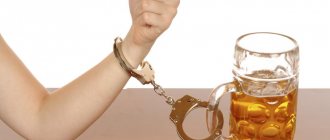Read on this page:
Drug addiction has a number of features that distinguish it from other human diseases. Let us note these differences between drug addiction diseases and other diseases:
- Drug addiction is complex. It includes two addictions: psychological and physical.
- Drug addiction diseases destroy all areas of a person’s life. Drug addiction destroys the physical sphere of life, that is, health; the emotional sphere, relationships with others, the inner life of a person; social sphere, his family and career; as well as the spiritual sphere, completely depriving the drug addict of moral principles and high goals.
- Drug use does not endanger just one organ, but disrupts the functioning of all systems and organs of the body, leading to their irreversible pathologies. This is due to the constant intoxication to which the drug addict exposes himself.
Psychological addiction to drugs
Drug use is a disease that can develop in almost anyone. The reason for this is that most people have internal psychological prerequisites for developing addiction. Usually a person seeks in drugs for consolation from life’s failures or an opportunity to solve them in this way. For example, an indecisive or very shy teenager may begin to use drugs that promote communication and emancipation.
As a result, when a psychoactive drug is used by a person who is potentially predisposed to acquiring addiction, his psyche begins to find many advantages in a state of intoxication, a solution to his problems. So people, not wanting to change, to acquire healthy communication skills, take the “easier” path, as it seems to them, - they go into the world of drug dreams. When psychological dependence on drugs is formed, a person begins to use them more and more often. Without psychoactive substances, life no longer seems satisfactory to a drug addict; he is missing something.
Dosages are gradually increased because tolerance to the drugs increases. To achieve the same level of euphoria that was observed during the first doses, the previous doses are no longer enough. Drug use becomes regular.
How to remove withdrawal?
With a single dose of a psychostimulant, you can cleanse the body on your own. To do this, perform the following steps:
- The volume of water consumed increases to 2-3 liters per day.
- Adsorbents are used, for example, the drug Enterosgel.
- Physical activity increases if there are no heart problems.
- Fatty, fried, salty, sweet, and smoked foods are excluded from the diet.
- It is recommended to regularly visit the bathhouse and sauna for increased sweating.
If the symptoms are severe and drugs have been used for a long time, then it will not be possible to get rid of the terrible state of health without medical help. During therapy, a drip with saline and restorative drugs is installed. Cleansing of the body is carried out over several days until the condition stabilizes. Detoxification in a hospital under the supervision of specialists will help avoid unpleasant consequences. In addition, psychologists also work with the patient in the clinic, whose task is to motivate the patient to continue treatment for addiction.
Drug withdrawal
Most likely, every adult and many children and teenagers have heard about withdrawal from drug addicts. Withdrawal for drug addicts becomes an insurmountable obstacle to stopping use. It’s not called withdrawal syndrome for nothing. As soon as the drug stops entering the human body after long-term and regular use, the addict experiences psychological and physical painful symptoms, and withdrawal symptoms occur. In the case of drug addiction, withdrawal is called drug withdrawal.
Withdrawal begins some time after the last dose of the drug. Its duration, symptoms, and intensity depend on the type of drug, length of addiction, volume of the last dose, and the general health of the person. Let's give a few examples.
Causes of the condition
Drug addicts develop persistent addiction on a psychological and physical level. A hallucinogen, entering the body, is integrated into the process of its life, replacing neurotransmitters that are responsible for the flow of nerve impulses from the brain to the rest of the body. As a result, the body completely stops producing many vital neurotransmitters. Nerve cells gradually die, as a result, brain activity decreases, and the person begins to degrade. Drugs cause changes identical to those in schizophrenics.
The connection between the cells of all organs is disrupted. As a result, the body turns into a collection of cells and nerve impulses caused by a psychotropic substance.
Spice withdrawal
When a person has developed a persistent physical dependence on spice, he experiences painful withdrawal without being able to smoke it. At this point, the addict begins to experience the following withdrawal symptoms:
- Behavior changes, he becomes irritable, subject to sudden mood swings and depression.
- The state of a drug addict can vary from frightening aggression to no less terrible lethargy; a person in this state is characterized by paranoia.
- The patient's sleep is disturbed, the overall tone of the body decreases, performance decreases, drowsiness and muscle weakness are observed.
- There may be trembling throughout the body, pain in the joints and muscles.
Drug withdrawal from spice begins 10-12 hours after the last dose. The described symptoms of withdrawal are observed in the patient for several days. It is difficult to say exactly how long withdrawal from spice lasts; this is due to the fact that the unstable composition of the drug acts differently each time. In addition, it matters whether detoxification was carried out and how it is carried out: at home or in a clinic.
Do people die from withdrawal symptoms?
To put it bluntly, every dose kills a drug addict. The process is just not as quick and obvious as a bullet or a handful of pills washed down with a bottle of champagne. A person can die not so much from drug withdrawal, but from complications that were caused by regular use. That is, the human body has been regularly exposed to poison (drug), it is weakened and we can say that it is working with all its might.
Therefore, we never recommend going through withdrawal at home or using strong medications or general anesthesia. The best option would be gentle ways to relieve symptoms of withdrawal on a physical level (without a large number of medications), which will help the organs recover, and the person himself - to ease this difficult period of withdrawal and cope with difficult emotional states.
And if someone is afraid that they are dying from withdrawal symptoms, it is worth reminding them that each dose is a big step towards death. Read on to find out why.
Phenibut withdrawal syndrome
Phenibut can rightfully be called a pharmaceutical drug, because it causes mental and physical addiction in the patient. When the drug is withdrawn, a person develops physical signs similar to the withdrawal symptoms of a drug addict: chills, weakness, impaired thermoregulation of the body. The habit of relieving psychological discomfort with the help of a drug leads to mental dependence on it. During withdrawal from phenibut, the following psychological symptoms are observed: depression, thoughts of suicide, and a strong desire to take the drug again. With long-term therapy with phenibut, there is a high probability of withdrawal symptoms when it is discontinued. Exactly how long the withdrawal syndrome from phenibut will last will depend on the dosage, duration of use, and the patient’s condition.
Withdrawal syndrome: the essence of the phenomenon
Under the influence of psychoactive substances, the nervous system stops producing endorphins - substances that suppress pain and improve mood. Now the tasks of natural compounds are performed by the drug. But when the body does not receive the substance it needs for a long time, it begins to “rebel.” Every cell in the body is unable to function normally without the drug. The nervous system begins to send “distress” signals to the brain, which is perceived by a person as severe pain.
Severe pain that permeates the entire body is intended to warn a person about the harm caused by drug toxins. There are only two ways to get rid of this torment: take a new dose of the drug to turn off the defense mechanism, or cleanse yourself of toxins and stop taking stimulants forever. Of course, the second path for a drug addict seems impossible, so he goes to great lengths to get a new dose and again plunge into oblivion.
In the future, even the threat of withdrawal (too long abstinence) causes animal fear in the addict. To prevent the torment of withdrawal symptoms, he is ready to commit crimes and endure any humiliation. This is exactly how the inevitable degradation of personality begins - without the help of specialists, physical and psychological dependence will chain a person to the drug, forcing him to continue his path of self-destruction.
Withdrawal from methadone
Symptoms of withdrawal in methadone drug addicts are painful: severe pain in joints and muscles, cramps, headache, gastrointestinal problems (vomiting, nausea, diarrhea), apathy and fear, depression and panic attacks. Methadone withdrawal lasts 3-4 weeks. The use of methadone is dangerous not only due to an overdose due to the cumulative effect, but also methadone addiction has the following features: the drug suppresses cough and gag reflexes, so phlegm is not removed from the body, and vomiting does not occur in case of severe intoxication. This can lead to the accumulation of pathogenic bacteria in the respiratory tract and toxins in the gastrointestinal tract. Therefore, a drug addict can be killed by pneumonia or poisoning.
Methadone
Methadone addiction produces the most painful symptoms. After withdrawal, the addict suffers terrible pain. There is a feeling that they are trying to break him from the inside. Convulsions begin, and persecution mania manifests itself in the psyche.
One of the features of methadone is the ability not only to accumulate in tissues and organs, but also to have an antitussive and antiemetic effect. This state of affairs often leads to death as a result of poisoning or pneumonia, because mucus and toxins are not eliminated from the body.
Signs of withdrawal in drug addicts: causes, treatment
As you can see, each drug causes withdrawal with its own specific symptoms, but among them there are some that are common to all types of drugs.
Physiological symptoms of withdrawal, characteristic of most narcotic drugs:
- Pain, sensations of twisting, aching in bones, joints, muscles.
- Lower back pain.
- Problems with the gastrointestinal tract, most often painful diarrhea, which leads to dehydration and exhaustion of the body, as well as nausea and vomiting.
- Convulsions, up to convulsive attacks, tremors of the limbs.
- Symptoms similar to colds and flu: runny nose, increased lacrimation, chills.
- Disturbances in sleep and wakefulness, insomnia.
Psychological symptoms of withdrawal, characteristic of most addictions:
- Irritation, aggressive behavior, manifestations of unreasonable anger.
- General weakness, lack of physical and mental strength.
- Feeling of loneliness, meaninglessness of life.
- Manifestations of fear from mild anxiety to horror and panic attacks. At the same time, fear does not leave the patient in his sleep in the form of nightmare visions.
- The addict loses interest in the world around him, becomes withdrawn, and stops communicating even with loved ones.
- Relationships with other people are destroyed, they are perceived as enemies, which causes inappropriate behavior in the drug addict.
Causes
What causes withdrawal symptoms? The fact that withdrawal symptoms are a consequence of using hallucinogenic drugs is generally understandable. But what exactly leads to changes in the body of a drug addict suffering from convulsions?
Every potential addict should understand that narcotic drugs are a set of synthesized or organic poisons that help wash out from the human body a complex of vitamins and minerals necessary for normal functioning.
Every day, these toxic drugs poison the body, interfering with its regenerative processes. Not only internal and external organs are adversely affected, but also all functional systems and joints. When bones break in drug addicts, they seem to turn outward, as if they are about to break into hundreds of pieces. This is where the colloquial name for abstinence among drug addicts comes from.
The body of an addicted person begins to hurt after the first doses of a toxic chemical compound. It’s just that the pain is masked by the subsequent use of psychotropic substances, and when the dose is not at hand, they fall in a powerful stream on the drug addict. Therefore, withdrawal is not a cause, withdrawal is already a consequence.
Why is withdrawal relief necessary?
Withdrawal syndrome or drug withdrawal requires mandatory treatment, that is, the removal of this condition with the help of medical means.
- It is withdrawal that leads the addict to use the next dose, leading him in a vicious circle of addiction. Therefore, by helping a person relieve withdrawal symptoms, you thereby give him a chance for recovery.
- The danger of withdrawal, which is not relieved by detoxification measures, is that the addict’s desire to take the drug is so strong that there is a huge risk of relapse after a period of abstinence. Over these few days, the human body has already partially cleared itself naturally, and its tolerance to the drug has decreased. Therefore, in the event of a relapse, a regular dose of a drug can cause an overdose, which is how many drug addicts died.
Psychotherapy
After drug treatment, it is important to eliminate the addiction on a psychological level. A psychotherapist will help with this.
The first thing to do is to isolate the drug addict from an unfavorable social environment. It is necessary to hospitalize him, treat him in a hospital and keep him under control. He should not have contact with people who supply him with drugs. If the patient goes home after detoxification, he may return to his previous lifestyle and start using drugs again.
Group therapy
It is important that the drug addict agrees to this method of treatment. Without his interest, the desired result will be very difficult to achieve.
Groups can be formed according to 2 characteristics. The first is that drug addicts with varying degrees of addiction gather. Second, patients are divided into categories based on the following factors:
- degree of dependence,
- duration of drug addiction,
- drug that the patient is taking,
- number of attempts to overcome withdrawal symptoms, etc.
The second distribution factor is more effective and is recognized as the correct approach, because it takes into account the characteristics of the dependence.
The goal of group therapy is to change your attitude towards life. As a result, indifference and dissatisfaction must be replaced with joy, happiness and interest in your future.
First, there is an introduction to the group members. Everyone talks about their problem: how and when it arose, why it is difficult to get rid of, etc. In the process, internal tensions and conflicts are relieved. Drug addicts see that they are not the only ones who have this problem; they can fight it. This charges you with internal motivation.
In group therapy sessions, the psychologist tries to reproduce a certain model of society. This helps drug addicts speed up the process of social adaptation. It is important that each participant is active and not silent.
The group meets regularly. The topic of discussion is set by the psychotherapist or one of the participants. It is important that it be socially oriented and show the possible consequences of different types of behavior.
The benefit for participants is that they can apply different models of behavior towards themselves or others . This resembles a role-playing game, which makes the treatment painless and easy. They gain experience that is necessary to adapt to real social conditions.
Group therapy takes on average 8–10 sessions. The amount depends on the mental state of the patient.
Neurolinguistic programming
The technique is based on hypnosis. Aimed at improving and improving the individual.
A person is taught on a subconscious level that drug addiction is bad; the temporary effect of a high will not cover up further torment during withdrawal. They explain that a healthy body and a clear mind are the key to a joyful and happy life.
During treatment, the patient is told about successful stories of recovery from drug addiction. The “correct” thoughts, movements, and skills are imposed on him. According to NLP, behavior patterns can also be changed without bad consequences for the drug addict.
There are different treatment techniques based on NLP. They are aimed at:
- achieving goals, making the right decisions,
- developing a feeling of disgust for any narcotic substances,
- increasing motivation, etc.
Social rehabilitation directly depends on personal growth. It is necessary to develop sober fortitude, the ability to stand up for oneself and make decisions. NLP helps not only to acquire new skills, but also to improve existing ones.
Withdrawal relief in the clinic and at home
Relieving drug withdrawal is a process of detoxification of the body. After all, it is the presence of toxic waste in the tissues and biofluids of the body that leads the drug addict to a state of withdrawal. Drugs and their derivatives prevent the body from adjusting to a normal mode of operation without the participation of narcotic substances.
Relief from withdrawal in drug addicts can take place in a specialized clinic, which is more preferable, as well as at home
- Medical detoxification in a hospital. This treatment is considered more effective and safer for the patient. Drug addiction is a serious disease characterized by a strong craving for drugs. In a specialized clinic, it is possible to exclude the patient’s access to drugs. Here the drug addict is under constant supervision of specialists, which makes it possible to adjust prescriptions during the treatment process. Accommodation in a clinic provides greater opportunities for hardware detoxification. When acute conditions occur, doctors can always use resuscitation measures and intensive care.
- Relieving withdrawal symptoms at home, calling a narcologist. This method of treatment is also acceptable. In this case, the specialist will not be able to use hardware therapy methods, but it is possible to carry out high-quality detoxification treatment at home. Droppers based on saline solution allow you to quickly relieve intoxication and dehydration of the body. They also add general strengthening agents and means to alleviate drug withdrawal. If the patient’s condition is of concern, the narcologist recommends placement in a hospital.
- Detoxification with home remedies. This method is appropriate in cases of first use, when the body is not yet heavily polluted and there is no stable addiction. Home remedies can only carry out light detoxification, as well as supplement the main course conducted by a narcologist. Home remedies include everything that helps remove toxins from the body naturally: increasing the volume of drinking water, active sports, visiting a bathhouse, and a light diet.
Drug treatment
Symptoms of withdrawal syndrome disappear as soon as the patient takes the next dose. But such a solution is not an option. Therefore, it is almost impossible to cope with drug addiction on your own, because the addict no longer has the willpower. Due to severe pain throughout his body, he cannot withstand the torment and prefers to use drugs to make it stop.
The hardest stage is serving time. The addict’s task is to wait out the withdrawal. During the process, the drugs must “leave” the body so that it can be cleansed. But not everyone can survive this stage. Then a breakdown occurs, everything repeats from the beginning.
An effective method of combating is detoxification. It includes a set of procedures during which medications are administered to the patient. Effective drugs that help relieve withdrawal symptoms:
- General strengthening. They help partially restore immunity and improve the general condition of the drug addict. Such medicines contain vitamins of all groups, magnesium sulfate, unitol, etc.
- Supporting cardiac activity. Natural remedies – caffeinated coffee, cordiamine. For tachyarrhythmia, drugs containing β-blockers and glycosides are prescribed.
- Antidotes. They help with poisoning from cocaine, LSD, amphetamine, and opioids. Naloxone will help against heroin and morphine. In the fight against benzodiazepim, Flumazenil will have an effective effect. If antidepressants were used as a narcotic substance, you should take Galantamine.
If a drug addict's withdrawal lasts for a long time, ultra-fast detoxification is prescribed. This is necessary if you are using opioids or methadone. The essence is that the patient is put into a state of artificial sleep. This way he doesn't feel much pain. The process involves clearing the drug and its metabolites.
Self-medication is strictly prohibited! Treatment is prescribed by doctors. Withdrawal symptoms are treated in a drug treatment clinic. But the healing process does not end there.
Drug addiction treatment course
Drug addiction is a complex disease that requires step-by-step treatment, and withdrawal relief is only the first step towards recovery. A full course of drug addiction treatment includes detoxification, rehabilitation and socialization of the addict. All these stages are important and necessary in order to get rid of addiction completely.
In ours, we provide comprehensive treatment for any type of drug addiction, from withdrawal withdrawal to socialization and the return of a former drug addict to normal life. When selecting a treatment course, we always take into account the type of addiction, medical history and psychological characteristics of the patient. This makes it possible to select the most suitable treatment and rehabilitation option for the clinical case. In order to get advice from a specialist on withdrawal symptoms and drug addiction treatment, you need to dial our call center, it works around the clock. The phone number is listed on the website page, using it you can get a free consultation right now. Take your first step towards recovery.
Treatment
A person suffering from withdrawal syndrome can only be helped with medication. While in the hospital, the patient will be under the supervision of specialists around the clock, they will help him get out of the state of drug withdrawal. What it is? What are the stages of removing a patient from withdrawal syndrome provided by the modern treatment process?
The first stage is cleansing. All poisons, chemicals, toxic compounds that contributed to the gradual decomposition and destruction of all its functional systems are removed from the patient’s body.
The second stage is restoration. Useful minerals washed out of the human body, aimed at maintaining his health and stabilizing normal life activity, are subject to mandatory replenishment and replacement of lost vitamins.
The cessation of withdrawal, achieved by doctors in a hospital, is far from the final moment of the drug addict’s recovery. This is only removing him from the state of withdrawal syndrome, which could well have ended in death if there had not been medical help nearby. For the treatment of drug addiction, entire courses of further rehabilitation are provided, which last more than one month.
How does withdrawal occur in drug addicts?
It is very difficult to describe how a drug addict feels during withdrawal. According to substance abusers, people who have been addicted to heroin or who have been using another drug for a long time, withdrawal can be divided into the following stages:
- The deterioration of the condition begins with loss of appetite, the appearance of feelings of anxiety, restlessness and constant emotional stress. Muscles ache, according to those who have undergone the syndrome, acute pain occurs in the chewing muscles and jaw joints. The condition gradually worsens and all of the listed symptoms intensify. Constant yawning is added, accompanied by pain in the jaws, numerous sneezing, and copious amounts of saliva.
- The most difficult period of withdrawal from drugs occurs at the end of the second day after stopping use. Due to muscle pain that “tears,” “twists,” “cramps,” the patient constantly squirms, and his behavior becomes anxious and aggressive. For the sake of a dose, a drug addict during withdrawal is ready to do anything.
- On days 3-4, acute vomiting and diarrhea are added to the existing symptoms. Constant stomach cramps, instead of normal sleep during the day, the patient may fall into a short state of unconsciousness. What a drug addict feels during withdrawal can be described as “Hell on Earth,” which can last up to 14 days in a row. Those who have gone through withdrawal lose up to 20 kilograms of weight; the poor fellow looks lifeless and exhausted. If there are diseases, such as heart disease, an addict may not survive withdrawal symptoms. All this is the price to pay for the desire to escape from reality.
If the article “Drug withdrawal: symptoms, stages” was useful to you, do not hesitate to share the link. You may save someone's life with this simple solution.
Similar articles:
- The effect of amphetamine on the body
- Amphetamine: consequences of use for the human body
- How long does amphetamine stay in the body?
- Main signs and symptoms of drug intoxication
- Symptoms of a heroin overdose
Tell friends:
Particular signs of addiction
How can you tell if a person is using drugs? Observe his behavior, paying particular attention to the 7 common signs listed above. If several of them coincide, then this is a reason to be wary and take the necessary measures.
If you are still in doubt, pay attention to specific signs of drug addiction:
| Drug group | Appearance | Characteristic signs of use | How long does the action last? |
| Opiates | Fine crystalline or solution, the color of which varies from snow-white to brown (depending on impurities) | - pale skin, - scratching injection sites, - severe constriction of the pupils, - increased tendon reflexes. | from 20 minutes to 2 hours |
| Cannabinoids | Crushed dry herb, which can be infused with additional psychoactive compounds | - redness of the whites of the eyes, - intense thirst, - increased appetite (especially for sweets), - drowsy state when the dose is exceeded. | from 1 to 2 hours |
| Psychostimulants | White, light yellow, pinkish or grayish powder, tablets and solutions. | - vigor and activity, - rich and emotional speech, -persistence, - lack of sleep and appetite for up to 3-4 days, - sweeping movements. | up to 2 hours |
| Salts and spices | Crystalline powder of various colors (salts) and dry crushed herbs in bright foil bags (spice). | - spasms of the lower jaw, - sudden weight loss (up to 8 kg per week), - sudden change in mood, - chronic dry cough. | up to 1.5-2 hours |
| Dissociatives | Pills | - visual and auditory deceptions of perception, - loss of orientation in time and space, - inappropriate behavior. | 4-5 hours |
Heroin withdrawal
The heaviest. Lasts 8-20 days. Heroin is a synthetic representative of opiates. It is injected into the drug addict's body intravenously. Addiction forms almost instantly. Heroin addicts often suffer from AIDS and viral hepatitis - they don’t care what syringe they use to inject themselves, just to inject themselves with a dose.
Heroin withdrawal begins 9 hours after the last injection. The first symptom is anxiety, followed by irritability, turning into aggression, after which the addict is visited by fear and a feeling of danger, which requires him to hide somewhere in a secluded place.
On the second day, chills, sneezing and sniffles appear, followed a little later by tears and sweating. The general condition is like the flu, only much worse. Next come symptoms typical of drug withdrawal syndrome - increased salivation, loss of appetite, nausea, vomiting, problems with the gastrointestinal tract. Convulsions appear later.
During withdrawal symptoms, a drug addict can lose up to 10 kg of weight. The apotheosis of heroin withdrawal is the feeling that all the bones are broken, the muscles are torn, and the joints are twisted, plus a terrible itching in the veins as heroin is injected.
The pain at this stage is so unbearable that the addict begins to bang his head against the walls. On the 5th day, symptoms begin to subside. Without medical intervention, symptoms subside after about 20 days. The appearance of a drug addict who has experienced heroin withdrawal is terrible.











